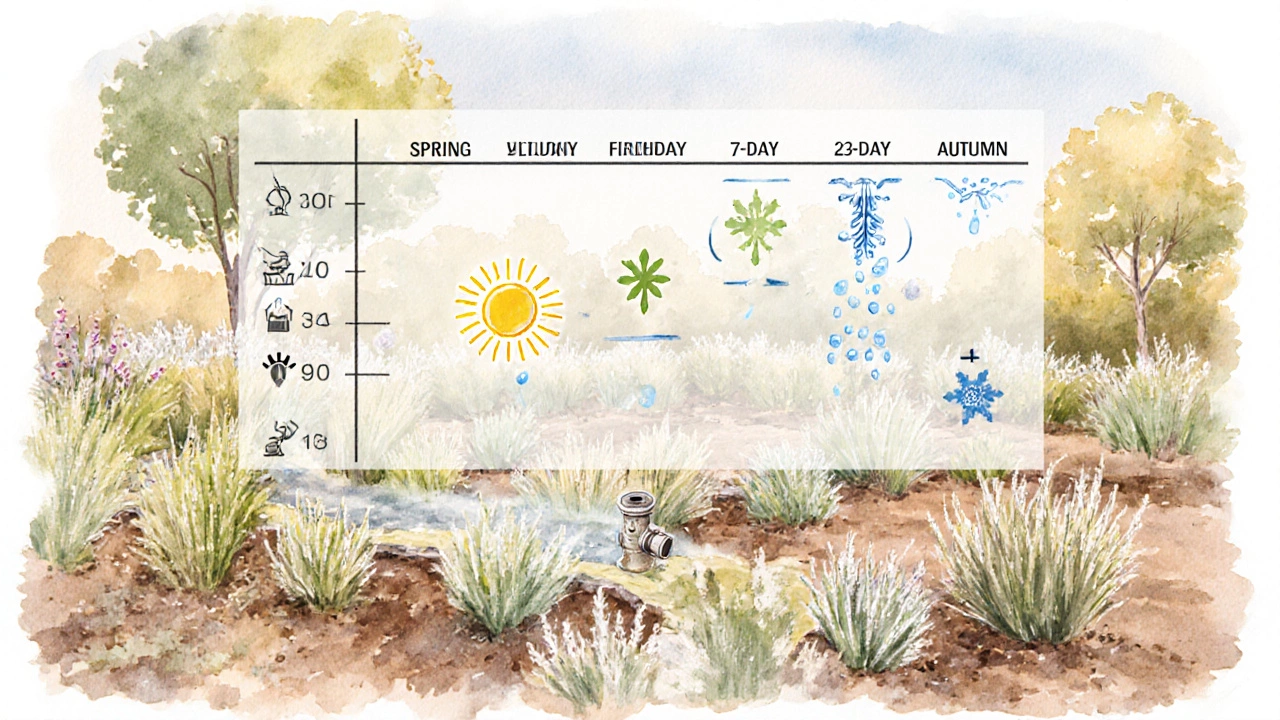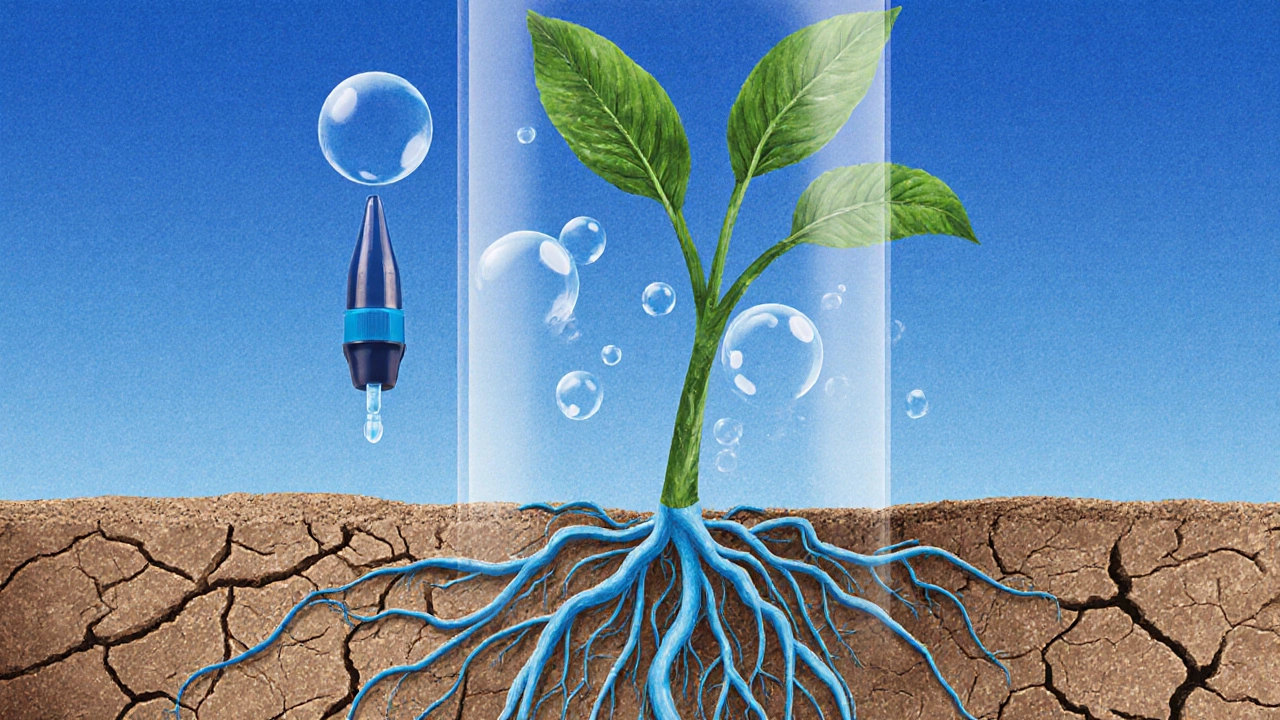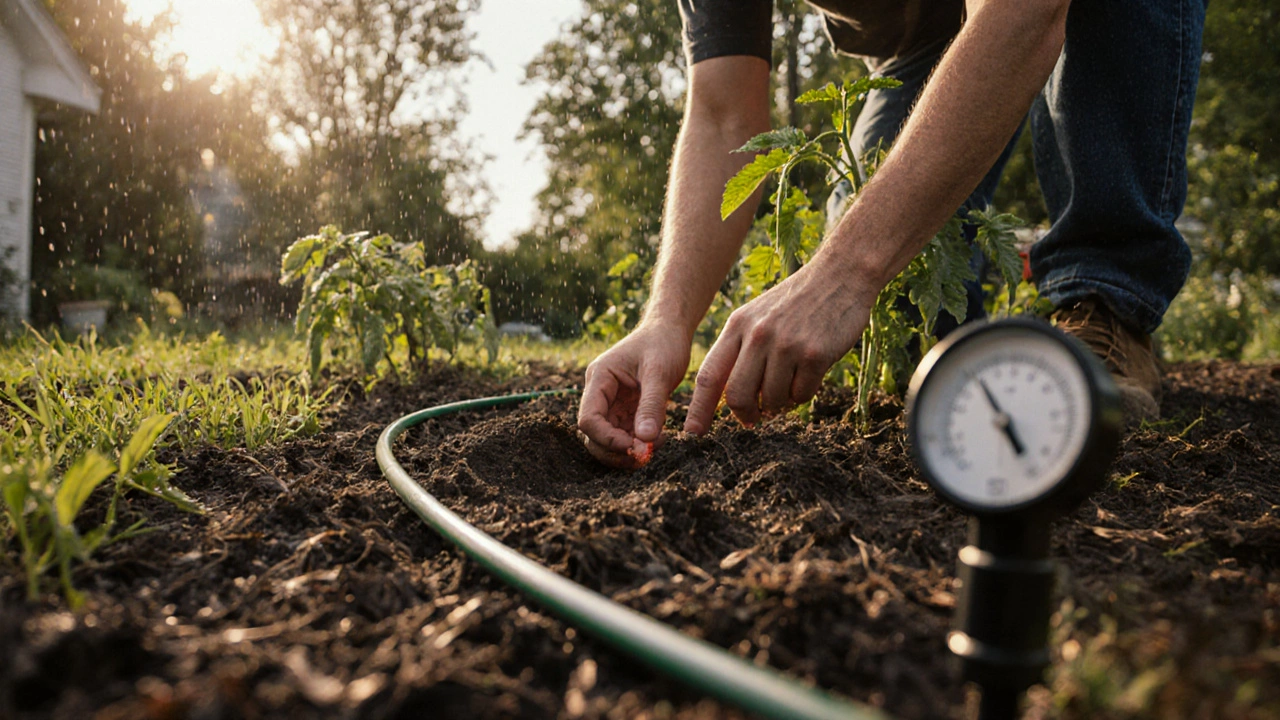Drip Irrigation Watering Calculator
Find the right watering schedule for your drip irrigation system based on plant type, season, soil conditions, and recent rainfall. Avoid overwatering and keep your plants healthy.
Recommended Frequency
Based on your inputs, here's what the article recommends:
Additional Recommendations
Check soil moisture with your finger: 1-2 inches deep before watering
In Manchester, skip watering if it rained more than 0.2 inches in the last 48 hours
Use a soil moisture meter for accuracy (aim for 3-5 on a 1-10 scale)
Running drip irrigation every day sounds like a good idea-after all, plants need water, and drip systems are efficient. But here’s the truth: drip irrigation doesn’t need to run daily, and doing so might be hurting your garden more than helping it.
Why Daily Drip Irrigation Can Backfire
Most gardeners assume that if a little water is good, more water is better. But plants don’t thrive on constant moisture. Their roots need air. When soil stays soggy day after day, oxygen gets squeezed out. Roots suffocate. Fungi thrive. You end up with root rot, yellowing leaves, and stunted growth-even if your plants are getting plenty of water. In Manchester’s damp climate, where rain comes often in spring and autumn, running your drip system daily is almost always overkill. Even in summer, the soil retains moisture longer than you think. A study by the University of Manchester’s Horticulture Research Group found that 78% of home drip systems in the region were watering too frequently, leading to 30% higher water bills and 22% more plant stress.How Often Should You Run Drip Irrigation?
There’s no one-size-fits-all answer, but here’s what works in real gardens:- Vegetables and annuals (tomatoes, peppers, lettuce): Every 2-3 days in warm weather. Water deeply so moisture reaches 6-8 inches down.
- Perennials and shrubs (lavender, roses, berry bushes): Once a week, or even every 10 days after they’re established.
- Native or drought-tolerant plants (sage, thyme, sedum): Every 10-14 days. Let them dry out between waterings.
- Seedlings and new transplants: Daily for the first 7-10 days, then reduce gradually.
How to Know When to Water
Stop guessing. Start checking. Stick your finger into the soil near the base of your plants. If the top 1-2 inches are dry, it’s time to water. If it’s still moist, wait. That’s it. No timers, no apps, no guesswork. You can also use a simple soil moisture meter-those cheap ones from garden centers work fine. Look for a reading between 3 and 5 on a 1-10 scale. Anything above 6 means you’re overwatering. Below 2 means you’re under. In Manchester, a good rule of thumb: if it rained more than 0.2 inches in the past 48 hours, skip your drip system. Rainwater is free, and it’s already doing the job.
Seasonal Adjustments Matter
Your drip schedule shouldn’t stay the same all year. Here’s how to adapt:- Spring (March-May): Start slow. Soil is still cool and holds moisture. Water every 3-4 days.
- Summer (June-August): Peak demand. Most plants need watering every 2-3 days, especially in sunny spots.
- Autumn (September-November): Rain returns. Cut back to once a week or less. Turn off your system if temps drop below 8°C.
- Winter (December-February): Shut it down. Dormant plants need almost no water. Frozen pipes are a real risk.
Common Mistakes with Drip Systems
Even experienced gardeners mess up. Here are the top three:- Same flow rate for everything: A tomato plant needs more water than a rose. Use different emitter types-2 GPH for veggies, 1 GPH for shrubs.
- Emitters clogged or misaligned: Check every month. Dirt, algae, and mineral buildup block tiny holes. Flush the lines every 3 months.
- Watering the wrong spots: Drip lines should be near the root zone, not the trunk. Keep emitters 3-6 inches from stems. Watering the base invites rot.
What About Mulch?
Mulch is your secret weapon. A 2-3 inch layer of wood chips, straw, or shredded leaves cuts evaporation by up to 70%. It keeps roots cool in summer and reduces the need for frequent watering. If you’re running drip irrigation daily and still seeing dry soil, the problem isn’t your system-it’s the lack of mulch. Add it. Then wait. You’ll be surprised how much less you need to water.
Real-World Example: A Manchester Backyard
In my neighbor’s garden, she used to run her drip system for 45 minutes every morning. Her tomatoes got blossom end rot. Her lavender died. Her water bill was £80 a month in summer. She switched to watering every other day for 20 minutes, added mulch, and installed a rain sensor. Within two weeks, her plants perked up. Her water bill dropped to £35. Her tomatoes are now the best in the street. It wasn’t about more water. It was about smarter water.When You Might Need Daily Watering
There are exceptions. Daily drip irrigation makes sense only in these cases:- Seedlings in containers on a hot, windy balcony.
- Very sandy soil that drains too fast (rare in the UK).
- Extreme heatwaves (temperatures above 30°C for 5+ days).
Final Rule: Less Is More
Your drip system is designed to deliver water slowly and precisely. That’s its strength. But if you run it every day, you’re wasting its precision. You’re turning it into a sprinkler-inefficient, wasteful, and harmful. Trust your plants. They’re not babies. They evolved to survive dry spells. Let them build resilience. Water deeply, wait a few days, then check the soil. Repeat. You’ll use less water. Save money. Grow healthier plants. And yes-you’ll have more time to sit back and enjoy your garden.Can I leave my drip irrigation on all day?
No. Leaving it on all day floods the soil and suffocates roots. Drip systems are meant to run for short periods-usually 20 to 60 minutes-once every few days. Running longer than 90 minutes at a time is almost always excessive, even in hot weather.
Do I need a timer for drip irrigation?
You don’t absolutely need one, but it’s the best way to avoid overwatering. Manual watering leads to inconsistency. A simple timer with a rain sensor ensures your system runs only when needed and stops if it rains. Basic models cost under £25 and pay for themselves in water savings within one season.
Why are my plants wilting even though I water every day?
Wilting from overwatering looks just like wilting from underwatering. The difference? Check the soil. If it’s wet and sticky, you’re drowning the roots. Stop watering immediately. Let the soil dry out for 2-3 days. Improve drainage if needed. Healthy roots need air, not constant moisture.
How do I know if my drip system is working right?
Turn it on for 10 minutes and check the soil 6 inches down. It should be moist but not soggy. Look at your emitters-they should all be dripping evenly. If some are dry or spraying, they’re clogged or misaligned. Flush the lines and adjust placement. A properly working system delivers water exactly where roots need it.
Should I turn off drip irrigation in winter?
Yes. Most plants go dormant in winter and need little to no water. Keeping the system running risks freezing pipes, especially in unheated sheds or outdoors. Drain the lines, cap the ends, and store the timer indoors. Reactivate it in early spring when soil temperatures rise above 8°C.

